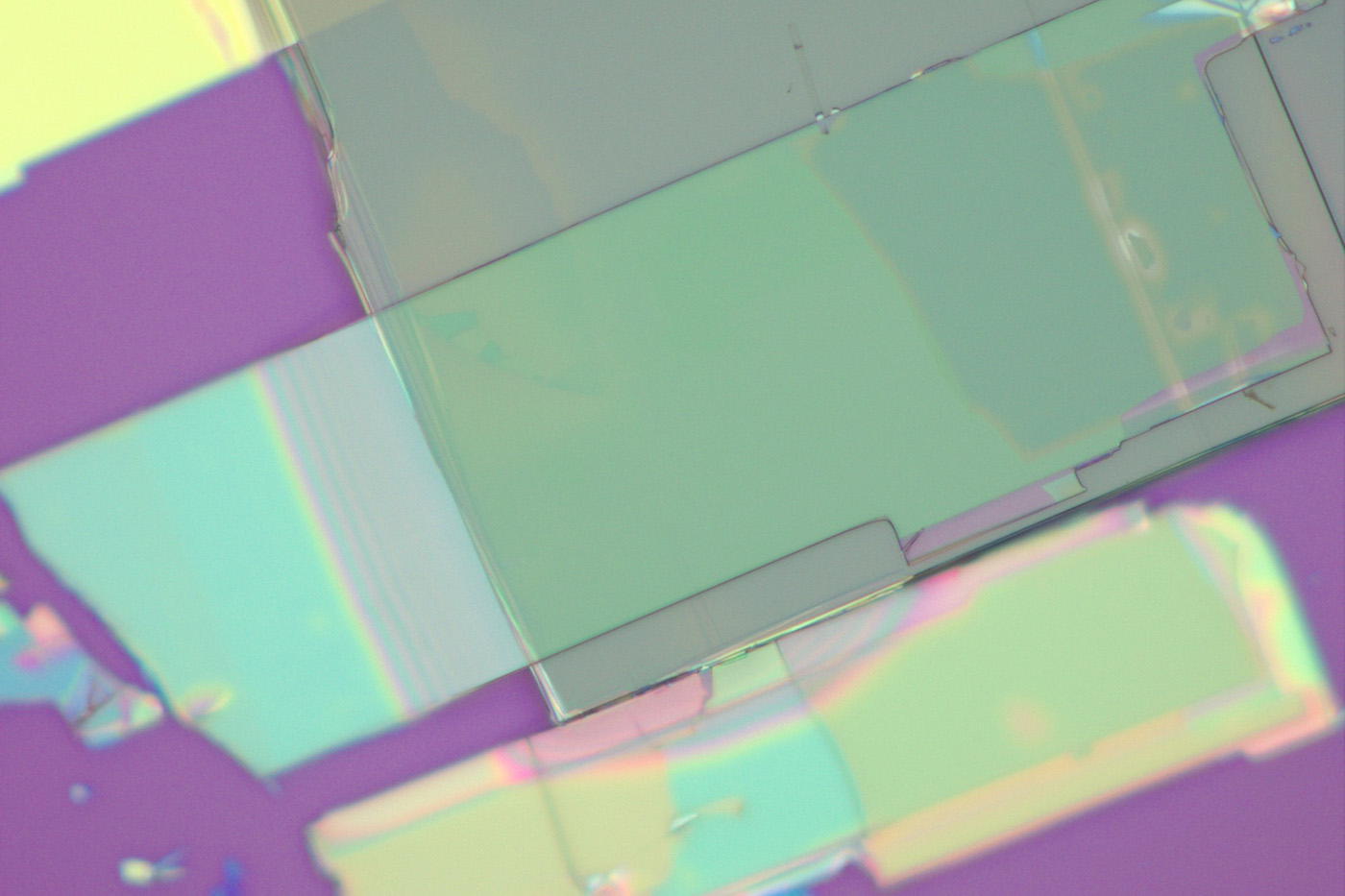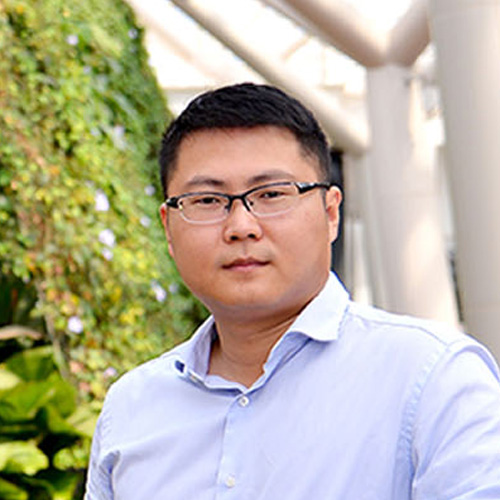Highlights
Small, flat entanglement source could be boon for quantum computing
 NTU Singapore PhD student Leevi Kallioniemi, who is co-first author of the published paper, with a blue laser set-up for generating entangled photon pairs. (Credit: NTU Singapore)
NTU Singapore PhD student Leevi Kallioniemi, who is co-first author of the published paper, with a blue laser set-up for generating entangled photon pairs. (Credit: NTU Singapore)
Researchers from the Centre for Quantum Technologies and Nanyang Technological University, Singapore (NTU Singapore) have generated entangled photons from a two-dimensional (2D) material. The team’s method could be useful for chip-based photonic quantum computing.
2D materials are attractive as a way to scale down the size of devices needed in photonic quantum computing. However, a challenge in making 2D entanglement sources has been that the thin materials produce photons too slowly to be practical.
Previously, researchers identified that the 2D crystalline material niobium oxide dichloride, or NbOCl2, could be an efficient emitter of photon pairs. In this work, the researchers show how to make those pairs emerge entangled. The entanglement is an essential ingredient for quantum computing.
Using a technique known as van der Waals engineering, the team led by CQT Principal Investigator Gao Weibo could generate entangled photon pairs from NbOCl2 with a fidelity of up to 86%. This means that the measured entangled state resembles what the researchers expect. The work is published in Nature Photonics on 14 October 2024.
“Our novel method to create entangled photon pairs paves the way for making quantum optical entanglement sources much smaller, which will be critical for applications in quantum information and photonic quantum computing,” said Weibo who is also a President’s Chair Professor in Physics at NTU Singapore where his group is based. His coauthors are his group members and collaborators at NTU Singapore’s School of Materials Science and Engineering.
Stacking helps
Van der Waals engineering is a technique to tailor material properties and design new materials. It involves stacking layers of atomically thin materials together. The different layers are held together by the weak van der Waals forces.
In their work, the researchers peel layers of NbOCl2 off a bulk crystal, each flake being just a single layer of atoms thick. They then stack two flakes together, rotating the top flake a quarter turn so that its crystalline grain is perpendicular to that of the lower flake. When the crystals are aligned perpendicularly, the researchers expect photon pairs to be produced with entangled polarisation.
 Two thin flakes of niobium oxide dichloride stacked on each other and photographed under a light microscope. One flake’s crystalline grain (grey flake) is positioned perpendicularly to the grain of the other flake (green flake). (Credit: NTU Singapore)
Two thin flakes of niobium oxide dichloride stacked on each other and photographed under a light microscope. One flake’s crystalline grain (grey flake) is positioned perpendicularly to the grain of the other flake (green flake). (Credit: NTU Singapore)
The idea is inspired by an established method to create entangled photon pairs – spontaneous parametric down conversion (SPDC). This involves shining a laser on millimetre-thick crystals chosen for their interaction with light. The interaction with light may split one incoming photon into two entangled outgoing photons.
Similarly, with the 2D material, the researchers create entangled photons by shining a laser through the material. In this experiment, they use a violet laser to create pairs of red entangled photons. The layers of NbOCl2 are, in contrast with bulky crystals, just micrometres thick. These layers could be stacked directly onto silicon chips containing other optical components.
Verifying entanglement
The researchers detect the entangled photons by measuring coincidence counts, when two photons arrive simultaneously at two photon detectors. To confirm quantum entanglement, the researchers also show that tuning the polarisation of one photon affects the other photon. They measured the quality of the entangled state by performing quantum tomography through a series of measurements.
 (From left) Weibo and his co-authors from NTU Singapore, Dr Lyu Xiaodan, Prof Liu Zheng and PhD student Leevi Kallioniemi. (Credit: NTU Singapore)
(From left) Weibo and his co-authors from NTU Singapore, Dr Lyu Xiaodan, Prof Liu Zheng and PhD student Leevi Kallioniemi. (Credit: NTU Singapore)
As a next step, the NTU team plans to experiment with design changes that could help to generate photon pairs faster, since the flat device does not yet match the performance of bulk entanglement sources. One idea is to introduce tiny patterns and grooves on the surface of the niobium oxide dichloride flakes, another is to stack the niobium oxide dichloride flakes with other materials.
This article is adapted from a news article by NTU Singapore: https://www.ntu.edu.sg/research/research-hub/news/detail/quantum-computing-and-photonics-discovery-paves-the-way-for-potentially-shrinking-critical-parts-by-1-000-times
Learn more
Related Stories
Spins line up for quantum sensing August 06 2024 | |
Novel solid-state device offers single photons on demand June 25 2024 | |
 | Meet a CQTian: Gao Weibo July 20 2022 |






